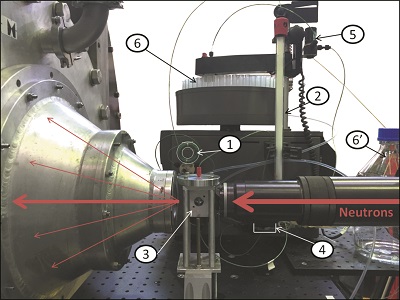Size exclusion chromatography combined in situ with small-angle neutron scattering
 Small-angle scattering is a powerful technique that can
yield important structural information on macromolecular systems. The X-ray and
neutron scattering analogues of the technique (SAXS and SANS, respectively)
have both seen increased use in structural biology in the recent past. One of
the latest developments for SAXS has been the availability of in situ size exclusion chromatography (SEC), which
allows SAXS data to be collected from freshly purified sample material.
Small-angle scattering is a powerful technique that can
yield important structural information on macromolecular systems. The X-ray and
neutron scattering analogues of the technique (SAXS and SANS, respectively)
have both seen increased use in structural biology in the recent past. One of
the latest developments for SAXS has been the availability of in situ size exclusion chromatography (SEC), which
allows SAXS data to be collected from freshly purified sample material.
Researchers at the Institut Laue-Langevin (ILL) in collaboration with colleagues from Keele University have now reported the first application of a SEC system on a SANS instrument to biological solution scattering. This development has been possible because the high neutron fluxes currently available on the ILL SANS instruments allow datasets to be acquired using small sample volumes with exposure times that are often shorter than a minute. This capability is of particular relevance in the study of unstable biological macromolecules where aggregation or denaturation issues are a major problem.
Recently published results [Jordan et al. (2016). J. Appl. Cryst. 49, doi:10.1107/S1600576716016514] demonstrate the feasibility of the SEC-SANS approach and the fact that it brings real benefits to structural studies of aggregation-prone biomolecules that could not be measured in their monomeric state using conventional experimental arrangements.
Following this proof of concept, a dedicated chromatography system integrated with the instrument hardware and control software is planned in order to deal with new “sensitive” protein structures, while achieving better statistics and improved data post processing.


